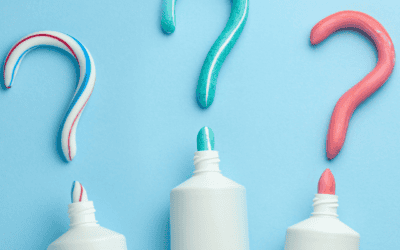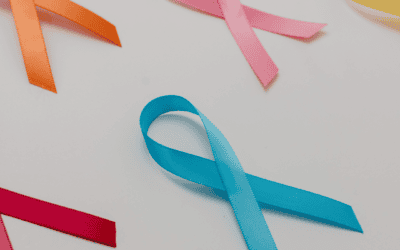We all know that sugar is bad for our teeth. Sugar causes tooth decay, where the structure of the tooth is broken down, leading to cavities. However, there is something else that can damage the structure of our teeth and this is acid. This works by a different process, essentially dissolving the tooth.

Before we dive in to what acid erosion is and how to avoid it, we need a quick chemistry lesson. Our mouths like to be at a neutral pH of around 7. Anything below 7 is more acidic, and anything above 7 is more alkaline. This neutral pH is maintained by our saliva which contains lots of enzymes and molecules, such as those that make up tooth enamel (calcium and phosphate). We talk about the saliva ‘buffering’ the acids – when your mouth pH drops to a more acidic level, the saliva works to bring this back up to neutral. The pH in our mouths can drop in response to acid, but it also drops when those pesky plaque bacteria get to work on the sugar you’ve just eaten. Essentially our mouth pH drops most times we eat (more on that later).
This drop in pH when we eat and the resulting buffering from our saliva can be demonstrated in the Stephan Curve:

As you can see, the pH drops quickly (this can take anywhere from 5 – 20 minutes, depending on the level of acidity/how much sugar is consumed), but it can take your saliva from 20 minutes to an hour to bring this back to neutral. The time spend in that ‘danger zone’ is when the damage will be occurring.
What damage does acid do to teeth?

The acids essentially dissolve the outer hard layer of the teeth – the tooth enamel. This enamel layer is the hardest substance in our body and it does not re-grow. Once the enamel is lost, the underlying dentine layer of the tooth is exposed. The dentine is much softer and cannot resist acid and decay as much as the enamel. If continued exposure to acids happens, the teeth will keep wearing down, getting shorter and shorter.
This can not only affect the appearance of the teeth, but as they wear down, this wear will get closer to the third layer of the tooth – the pulp. The pulp is in the middle of each tooth and is make up of blood vessels and nerves. As wear gets closer to the pulp, the tooth will start to get sensitive, and in severe cases the nerve of the tooth can actually become exposed and/or eventually die. This can result in root canal treatment being required.


We’ve discussed a drop in pH from sugar consumption, but where does the acid come from? Acid erosion can come from one of two sources:
- Intrinsically, from inside your body, such as acid reflux or acid from vomiting;
- Extrinsically, from outside your body, such as acid in food and drink, and even chemicals in some occupational settings (such as battery manufacturing).
Which foods and drinks are acidic?

All soft drinks are acidic. To make something fizzy, carbon dioxide is used (i.e., carbonated drink) and this becomes carbonic acid in the solution (yet more chemistry!). To add further to this, phosphoric and citric acid can also be added as flavourings and preservatives.
A comprehensive study on the acidity of non-alcoholic drinks available in Australia was published in the International Journal of Scientific study in 2020 by Dr Jeremiah Schmidt and Dr Boyen Huang (read the study here if you are interested!). They found the pH of many drinks available in Australia and also marked them as:
- Extremely erosive – pH of less than 3
- Erosive – pH 3 – 4
- Minimally erosive pH 4 – 5.5

So we can see that soft drink, energy drinks and sports drinks are all very acidic. But what about fruit juice, that’s supposed to be good for us, right?

Ok, so fruit juice is also erosive. What about water, that’s pH neutral surely?

So, as we can see above, not all water is created equally. Any water with flavours added will be more acidic. Sparkling water alone is only minimally erosive, but surprisingly on that table, is Pump water, which is also minimally erosive. However, other plain bottled waters and tap water are perfectly safe for teeth.

The other thing to note, is that although not in the list above, fresh fruit juices and smoothies that you make at home or buy at your local coffee shop are just as damaging. The reason that fruit juice is damaging to teeth is that they naturally contain acids, such as citric acid. These juices/smoothies are more damaging than eating the fresh fruits for two reasons.

For the first reason, we need a quick biology lesson. When eating, for example, an apple, the acids and the sugars in the apple are bound up in the cells of the fruit. When a fruit is juiced, these acids become free of the cells and are more damaging. The second reason is that while you might drink a juice containing one cup of strawberries, a banana, three peaches and two oranges, you are unlikely to eat this in one sitting. That means a whole lot more acid and sugars.
How to avoid acidic erosion
The first thing is to reduce how much we are having. We know this can be tricky when you’ve been in the habit of drinking these drinks for so long.
The second thing is to reduce how often we are having them. If we think back to the Stephan curve, if you are having an acidic (or sugary) drink, we learned that it can take up to 60 minutes for our mouths to return to neutral. So if you buy that breakfast smoothie and drink it over the course of the morning, you are having multiple acid attacks, without your mouth having time to recover.

It is therefore better if you are having an acidic (or sugary) drink, to have it in the one go, rather than sipping over a longer period of time.
Following an acid attack there are then things you can do to bring that pH back up to neutral, such as:
- Chewing sugar free chewing gum – this stimulates your saliva glands to produce more saliva, which will help buffer those acids
- Eat something alkaline, such as cheese – this will also get the saliva going, but has the benefit of being more alkaline
- Have your drinks with a meal – similar to chewing gum, when you are eating, the saliva is flowing and so the acids will be buffered quicker.
If you are worried about acid wear, please speak to your dentist. There are things we can do to help with symptoms from desensitising varnishes, to placing fillings or crowns and onlays.



